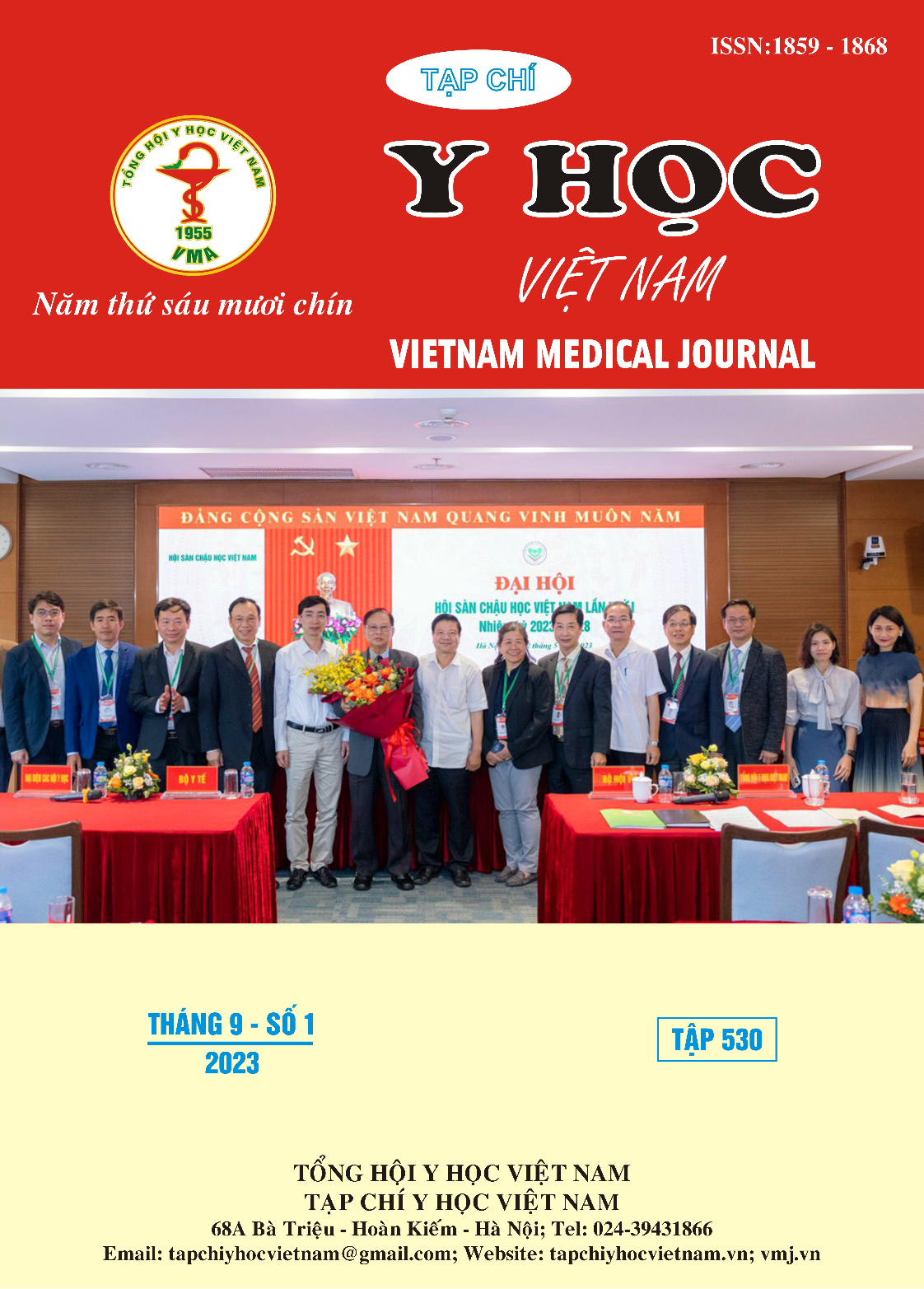RELATIONSHIP BETWEEN SOME FACTORS AND SILICONE REJECTION AFTER RETINAL DETACHMENT SURGERY
Main Article Content
Abstract
Purpose: evaluate the relationship between some factors and silicone rejection after retinal detachment surgery. Materials and methods: The study was conducted on a data file of 21 patients (22 eyes) who were diagnosed with silicone sponge rejection. Results: the number of eyes with the systemic disease was 2, accounting for 9.1%, while the figure for ones with the non-systemic disease was 20 (90.9%). In terms of the relationship between silicone rejection and silicone material: there was one eye (4.5%) with solid silicone rubber and 21 eyes (95.5%) with silicone sponge. In addition, the relationship between silicone rejection and ocular anterior ischemia (axial length and silicone buckle length): the average silicone buckle was 7.35 ± 0.15 cm, the average axial length was 23.35 ± 0.15 mm, 2 eyes were recognized as the short length of silicone buckle, at 5.8 and 6.0 cm. Conclusion: Silicone rejection may be related to immune-deficient disease, silicone materials, and ocular anterior ischemia with silicone buckle length and axial length. Thus, peri-operation plays an integral part in reducing the number of cases of silicone rejection after retinal detachment surgery.
Article Details
Keywords
: silicone sponge rejection, retinal detachment
References
2. Yoshizumi MO. Exposure of intrascleral implants. Ophthalmology. Nov 1980;87(11):1150-1154.
3. Russo CE, Ruiz RS. Silicone sponge rejection: early and late complications in retinal detachment surgery. Archives of ophthalmology. 1971; 85(6):647-650.
4. Oshima Y, Ohji M, Inoue Y, et al. Methicillin-resistant Staphylococcus aureus infections after scleral buckling procedures for retinal detachments associated with atopic dermatitis. Ophthalmology. 1999;106(1):142-147.
5. Lincoff H, Stopa M, Kreissig I. Cutting the encircling band. Vol 262006.
6. Ambati J, Arroyo JG. Postoperative Complications of Scleral Buckling Surgery. International Ophthalmology Clinics. 2000;40(1):175-185.


